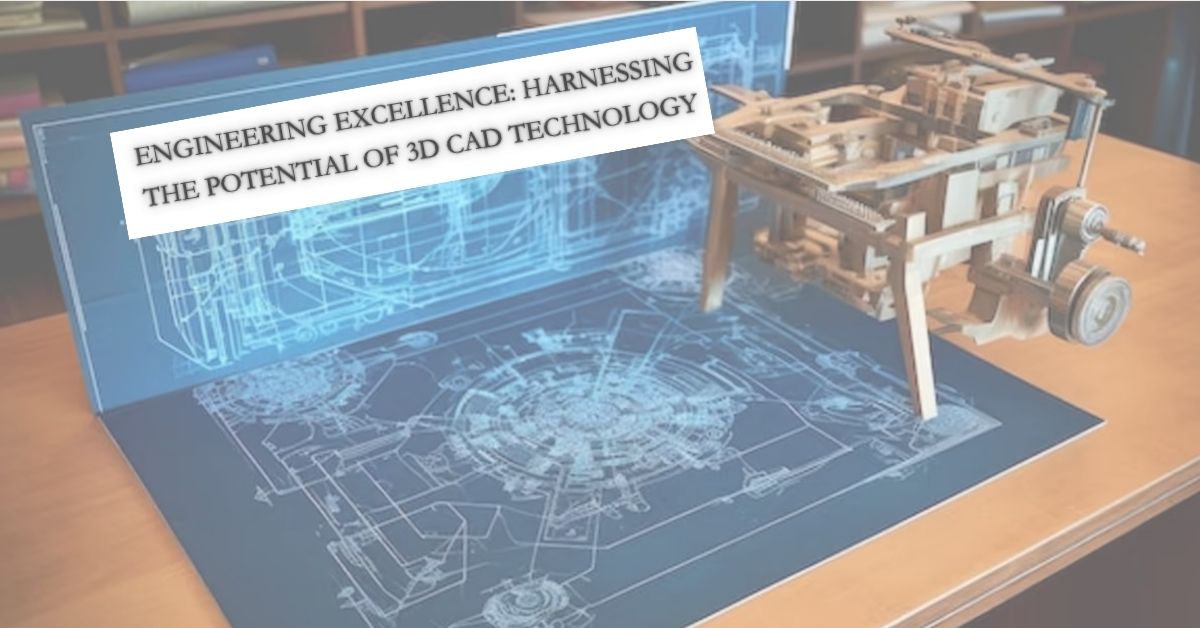In the ever-evolving realm of engineering, the adoption of 3D CAD (Computer-Aided Design) technology has emerged as a pivotal force, reshaping how innovations are conceived, designed, and brought to life. This article delves into the transformative power of 3D CAD, exploring how it acts as a catalyst for engineering excellence and innovation. Additionally, the integration of professional CAD drawing services further amplifies the impact of 3D CAD technology. These specialized services bring a depth of expertise to the design process, ensuring meticulous detailing, precision, and optimal utilization of the capabilities offered by 3D CAD.
Beyond 2D: Unleashing the Third Dimension
Traditionally, engineering design was confined to 2D representations, limiting the depth of analysis and understanding. The advent of 3D CAD technology has shattered these constraints, allowing engineers to create intricate, three-dimensional models. This shift has revolutionized the design process, offering a comprehensive view beyond the surface and allowing for a more nuanced understanding of complex systems.
Precision Redefined: Accuracy in Every Detail
One of the hallmark advantages of 3D CAD technology is its unprecedented precision in engineering design. Engineers can meticulously model and analyze every component, ensuring each detail aligns with the project’s specifications. This newfound accuracy minimizes errors and optimizes the manufacturing process, leading to higher quality end-products.
Efficiency Unleashed: Streamlining the Design Process
Time is critical in engineering projects, and 3D CAD technology optimizes the design process. Its features facilitate rapid prototyping, iterative improvements, and quick modifications. This efficiency accelerates time-to-market and allows for agile responses to evolving project requirements, fostering a dynamic and adaptable design environment.
Collaborative Design: Breaking Silos
3D CAD technology is a catalyst for collaborative design, breaking down traditional silos that may impede effective teamwork. Engineers, designers, and stakeholders can engage in real-time collaboration, contributing their expertise to the refinement of the design. This collaborative synergy enhances creativity and problem-solving and ensures that diverse perspectives contribute to the project’s success. Integrating professional 3D CAD services further enriches this collaborative environment. These services bring specialized expertise, offering technical support and ensuring that the collaborative efforts within the 3D CAD framework are optimized for efficiency, precision, and innovative outcomes. Together, collaborative design and 3D CAD services redefine the boundaries of teamwork in engineering endeavors.
Visualization that Inspires: Selling Ideas with Impact
The power of visualization cannot be overstated, especially in complex engineering projects. 3D CAD technology enables engineers to present their designs visually impactfully, aiding in client presentations, team discussions, and project pitches. The ability to vividly showcase intricate designs enhances communication and fosters a deeper understanding of project nuances.
Simulation and Analysis: Ensuring Performance Excellence
Integrating 3D CAD with simulation and analysis tools is a game-changer for engineering excellence. Engineers can simulate real-world conditions, analyze stress points, and optimize designs for maximum performance. This iterative process ensures that the final product meets and often exceeds performance expectations.
Sustainability Integration: Engineering for the Future
As sustainability takes centre stage in engineering considerations, 3D CAD technology facilitates the integration of eco-friendly design principles. Engineers can explore different materials, analyze environmental impacts, and optimize designs for efficiency and reduced ecological footprint. This aligns engineering processes with a commitment to a more sustainable and environmentally conscious future. Furthermore, ensuring conflict mineral compliance becomes an integral part of this eco-conscious approach. By incorporating ethical sourcing practices into the design process, engineers contribute to environmental sustainability and ethical and responsible resource utilization, fostering a holistic commitment to a sustainable future.
Future-Proofing Innovation: Adapting to Changing Realities
In the face of a rapidly evolving technological landscape, 3D CAD technology stands out as a tool for future-proofing engineering innovation. Its adaptability to emerging technologies, such as Artificial Intelligence (AI) and the Internet of Things (IoT), ensures that engineering excellence can evolve and meet the challenges of tomorrow.
Embracing the full potential of 3D CAD is not just a technological choice; it is a commitment to excellence and a testament to the limitless possibilities that unfold within the third dimension. As engineering landscapes evolve, the harnessing of 3D CAD technology becomes synonymous with pushing the boundaries of what is possible in pursuing engineering excellence.


